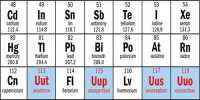The black holes are mysterious and we do not know about them yet. If there is one thing we know, it cannot avoid anything, including light, which makes them difficult to study. Over the past decade, researchers have been able to recreate “black holes” in the lab. The not gravitational juggernauts nuts found in space but analog versions that behaves like them.
In 2017, a team from the University of Nottingham in the UK first created a “water black hole”. Now they have announced that they have made it more similar to its cosmic cousin. Using the upgraded setup, the team demonstrated the occurrence of backlash in an analogous black hole. This is the first survey to prove that the evolution of black holes from church fields can simulated in the lab.
The concept of backreaction comes from Einstein’s theory of general relativity. It converts the interaction of a black hole with the surrounding fields as a change in its mass and spin – this is not something that can easily translated into simulation. After all, a water black hole is just a water tank with plughole. Can they really demonstrate this complex property? As reported in the physical review paper, the answer is yes, and its effects are significant.

Scientists Demonstrate Black Hole Evolution with “Bathtub” Plug Hole Simulation
Simulations of water black holes are relatively straightforward. A tank of water is a fountain spiral, like when you pull the plug into the sink. This creates a “black hole” in its center if not plugged in. The waves in the tank created by mimicking the interaction between the black hole and the surrounding universe, and any wave encountered by the “black hole” is sucked out, sending more water into the drain. It changes the property of the black hole (it is now “big”) and these changes do not disappear.
As the waves get closer to the drain, they push more water under the plughole, which reduces the total amount of water in the system. This is the result of a permanent change in the properties of the “black hole”, which researchers show is that when waves are transmitted to a “black hole” the object’s own properties also change.
Lead author Dr. Sam Patrick from the University of Nottingham said in a statement, “For a long time, it was not clear whether the reversal would cause any measurable change in an analog system where a fluid flow is driven, for example, using a water pump. We have shown that analog black holes, like their gravitational parts, are internally behind the system. “
“We have shown that waves in a water bath bathtub push water under the plug hole, significantly changing the speed of the drain and consequently altering the effective gravitational pull of an analog black hole.” In fact, the effect more pronounced than expected.
“What’s really interesting to us is that the retreat is so large that it lowers the water level of the whole system so much that you can see it right in front of your eyes!” Dr. Patrick added. “It was really unexpected. Our research paved the way for experimental interactions between waves and the space they pass through. For example, such interactions would be crucial for investigating the evaporation of black holes in the laboratory.”
















